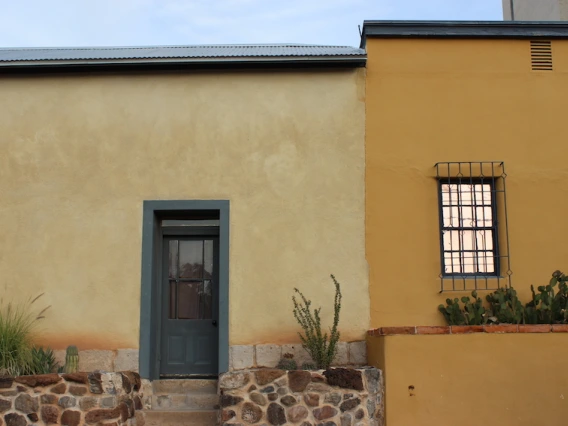
As languages overlap and blend in border regions, bilingual speakers demonstrate the subtle ways speaking patterns shift and adapt to linguistic influences while maintaining the grammar of both languages.
An ongoing University of Arizona research project is using interviews to analyze whether Spanish grammar converges towards English in the speech of local bilinguals, and to what extent it presents sociolinguistic continuities with the varieties found south of the border.
Ana M. Carvalho, Professor in the Department of Spanish and Portuguese, says the Corpus del Español en el Sur de Arizona (CESA) began in 2012 as a way to document and disseminate Spanish varieties spoken in Arizona. When two former graduate students who’d worked on the CESA project became professors at the University of Texas Rio Grande Valley, they began a parallel project inspired by Dr. Carvalho’s work, the Corpus Bilingüe del Valle (CoBiVa).
A new grant from the National Endowment for the Humanities will enable Carvalho (co-PI) and the UTRGV researchers, Katherine Christoffersen (Project Director/PI) and Ryan Bessett (co-PI), to improve transcription and preservation of the interviews and expand the research potential of data, included multiple linguistic analyses of Spanish-English bilingual varieties in both regions and subsequent comparisons between them. And as the two corpora become more robust, they can serve as models for other similar projects, which will enable broader comparative research about varieties of Spanish in the United States
“We’re interested to see what’s going to happen with that comparison,” Carvalho says. “Here, we find that the variety of Spanish in Tucson has a lot of similarities with the one in Sonora. Research shows the same in Texas. However, McAllen is more bilingual than Tucson, so that may have consequences in the way the languages influence one another.”
The project, “Bilingual Voices in the U.S./Mexico Borderlands: Technology-Enhanced Transcription and Community-Engaged Scholarship,” is funded with $59,975 under NEH’s Humanities Collections and Reference Resources program.
The process starts with students, both undergraduate and graduate, who conduct interviews with bilingual speakers in the community. The recordings of those interviews, and subsequent transcriptions, serve as the data for analysis. Together, the CESA and CoBiVa archives now contain nearly 10,000 minutes of audio recordings from more than 150 Spanish/English bilingual community members, along with detailed demographic and linguistic information.
The slow process of manual transcription hinders progress, so the researchers are exploring how various digital tools can speed and streamline the process. Speech recognition and time-alignment software will improve access to this unique collection, extend and enhance its usability, and establish a long-term preservation and distribution plan.
“It’s an exploration grant to test software that’s available for transcription,” Carvalho says. “We have a speech software for English and now there’s one for Spanish, but they don’t know what to do with code switching. That’s the challenge for bilingual speakers.”
Improving the technological processes of the project will also allow for greater student involvement in terms of expanded interviews and more immediate analysis. As Hispanic Serving Institutions, both universities serve a large number of students who are themselves members of the border communities being studied. Participating in such community-engaged scholarship gives students a greater understanding of the unique qualities of border dialects and a heightened appreciation for their own bilingual abilities, Carvalho says.
“Bilingual students can analyze their own speech. There is stigma about bilingual varieties, about people switching back and forth. When our bilingual students come to the university, they are sure their Spanish is bad,” Carvalho says. “Once they go out in the field and interview someone for a whole hour and transcribe and analyze and compare that speech, they realize their Spanish is as good as anybody else’s.”
There’s a current debate in the field about whether bilingual speakers maintain two separate linguistic systems or one combined linguistic system. The project will provide a greater understanding of how permeable languages are in situations of prolonged contact.
With CESA and CoBiVa as starting points, researchers elsewhere can develop their own local community-based and community-driven sociolinguistic projects, providing data for a larger comparative study across various borderlands regions to analyze linguistic insecurity, language maintenance or loss, and linguistic identity.
“One thing that we know about minority languages is they tend to be displaced in three generations. You would think in theory that Spanish doesn’t stay in the United States, but it does stay through continued contact with Spanish monolinguals,” Carvalho says. “The lexicon is the part of the speech that is most often changed. While you hear speakers in Mexico introduce English words into their Spanish, this happens even more often in Tucson. The way that words travel in the form of language is very fast, even more so among bilinguals. Such lexical borrowings are appropriate, efficient, and common in situations of language contact worldwide.”
The interviews, both audio and transcriptions, are also valuable for use in language classes. Using the community’s language as the textbook instead of “standard” Castillian Spanish can foster increased student engagement. “Instead of just using the textbook, instructors can provide examples or have students find examples of whatever grammatical structure they’re studying,” Carvalho says. “It’s a living example of speech being the learning tool.”

